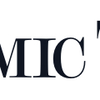Business News

The Economic Times: Breaking news, views, reviews, cricket from across India
Updated: 4 hours 25 min ago
CBI arrests GM of PGCI for taking bribe
Categories: Business News
India's farm insurance proves costly
Categories: Business News
Key changes for SBI credit cardholders
Categories: Business News

